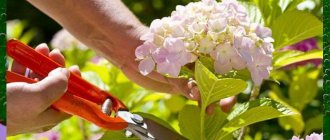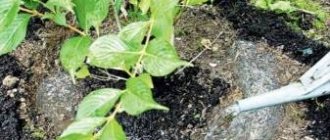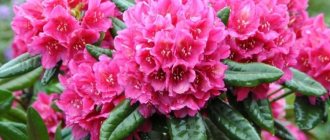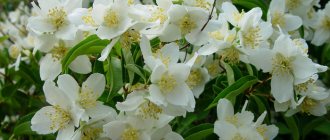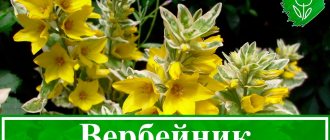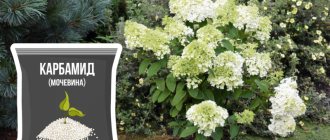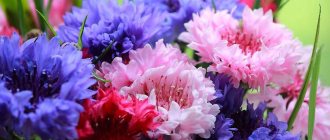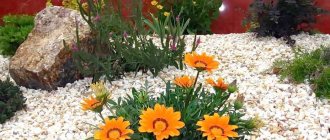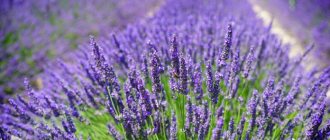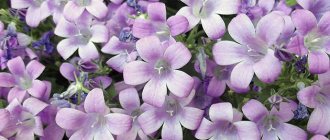Wonderful hydrangeas
The hydrangea plant belongs to the Hydrangeaceae family.
In total there are about 100 varieties of it. Among them there are upright, climbing, evergreen, deciduous, heat-loving and frost-resistant forms. In temperate latitudes, hydrangea flowers are bushes reaching a height of 1.5 m. The plants have large green oval-shaped leaves with wavy edges. From mid-summer they begin to bloom and delight with their beauty until the end of autumn. When in bloom, the plants are covered with beautiful multi-colored caps-inflorescences, behind which the leaves are practically invisible. Their color depends on the acidity level of the soil. Flowers can be pink, cream, white, purple, blue or lilac. Their beauty can be appreciated by the photos of hydrangeas given in the article. Planting flowers and caring for them require certain knowledge so that gorgeous flowers delight with their beauty. Professional gardeners note that the crop is relatively unpretentious. That is why it is actively planted in gardens, parks, garden plots, near houses and in public gardens. Depending on what goals landscape designers pursue, they choose liana forms, shrubs or plants in the form of a small tree.
A bush similar to hydrangea and blooming with white flowers
There are several other varieties, just like hydrangea.
Alyssum
Another “double” of hydrangea is the wildly flowering alyssum, a member of the Cruciferous family. Its height rarely exceeds 30 cm. The leaves are gray-green, the flowers are lilac, yellow, white-pink, pale lilac and purple.
Different varieties will bloom gradually from spring to fall. Mountain alyssum blooms twice, in spring and autumn. All varieties, with the exception of sea varieties, tolerate frost well and are grown as perennials.
Easy to care for, loves sunlight and light, loose soil.
Alyssum - the “double” of hydrangea
Spirea
Another unpretentious shrub similar to hydrangea is spirea. Belongs to the Pink family. Another name is meadowsweet.
Spiraea begins to bloom in March. The inflorescences have a crimson, pink, and white color.
Likes to grow in well-lit areas or in light shade. With regular rainfall it does not require watering. If there is no precipitation, then it is enough to water 2-3 times a month.
Note! Spiraea bushes reach a height of 2 m.
Spiraea grows very quickly, so it requires regular pruning.
Rhododendron
Scarlet, peach, hot pink, lilac and white rhododendrons rival hydrangeas for the title of gardener's favorite. The name of this plant translated means “rose tree”.
In the Russian climate, rhododendrons grow well only in the Caucasus and the Far East. In the conditions of Central Russia, caring for a rose tree is too painstaking, so it has not gained popularity among flower growers.
Rhododendron is very beautiful, but it is very difficult to grow.
Why are aconite and hydrangea an ideal pair?
For all their visual attractiveness, many types of aconite, and, above all, aconite, have one significant drawback - weak, arched, drooping stems. They need a garter so that the rather tall bushes maintain an upright position and straight stems. Otherwise, their stems begin to bend toward the ground and become bent.
But in natural flower beds, tied plants look unnatural. And here the combination with hydrangea turns out to be very successful, because its woody bushes can serve as a natural support for aconite. To do this, you need to plant aconite not in front of the hydrangea, but push it a little under the bush, helping the stems get to the light between the branches of the bush.
The flowering time of aconite capillary and tree hydrangea approximately coincides. And when aconite blooms, young greenish caps appear on the hydrangea. A very harmonious combination of purple and lime colors is created with each other. The size of the flowers also allows you to create a successful duet, since an individual aconite flower is twice the size of an individual hydrangea flower. At the same time, the aconite inflorescences are much smaller than the hydrangea cap, which gives a remarkable contrast.
When the hydrangea inflorescences turn white, aconite still continues to bloom. To extend such a successful combination until late autumn, you can add other types of aconite to the flower garden, in particular, Carmehill aconite, which blooms until October. By the way, this type of aconite can be planted in front of hydrangea bushes or between them, because this species has a stronger and more resistant stem that does not need support.
Aconite and hydrangea are also ideal for growth conditions. Both plants tolerate partial shade and require regular watering. Both hydrangea and aconite prefer loamy, moisture-intensive soils with a slightly acidic reaction. Moreover, despite the moisture-loving nature, the soil for them must be well-drained, because their root system easily rots when there is excess moisture. Joint plantings of aconite respond very well if they are mulched with peat.
Hydrangea serves as a support for aconite stems. Lyudmila Svetlitskaya
Southern regions of Russia
In the south of the country, all types of hydrangea can grow and bloom beautifully, but due to high temperatures and dry winds, the plant requires planting either in the shade of trees or buildings. In addition, watering is carried out at the first signs of dry soil.
Large leaf hydrangea
This is one of the most beautiful types of plants. It blooms in large spherical inflorescences, of different colors depending on the acidity of the soil. It requires care, grows better in partial shade, freezes slightly, requires shelter, winter-hardy varieties have been bred. It is better to grow in containers to bring indoors for the winter.
oakleaf hydrangea
The leaves look like oak leaves. Blooms with white spike-shaped inflorescences. Valued for the color and shape of the leaves (see photo). Loves sunny areas, good in landscape design. In central Russia it freezes slightly. Best varieties: Snow-white domes, Show Queen
Ash hydrangea
The second name is gray; it is rarely grown in Russian conditions. Looks good in hedges, suitable for making winter bouquets (see photo). Without pruning it takes on a neglected appearance.
Prefers fertile soil, does not like sun and winds. The variety (Macrophylla) has gained the most popularity.
Hydrangea serrata
The plant is distinguished by its beautiful color range and dependence on the composition of the soil. On alkaline soils it turns pink, on acidic soils it turns blue (see photo).
Serrated hydrangea Preziosa
Petiole hydrangea
This variety is a vine and grows up to 25 meters. With the help of aerial roots, it clings to supports and entwines the walls of the house, arches and gazebos. Flowers range from white to lilac (see photo). Prefers shade. For the winter it is removed and covered with non-woven material. Listed in the Red Book.
Hydrangea: varieties with photos and names
Which hydrangeas (garden varieties) are most popular?
Large-leaved hydrangea is a frost-resistant species. This winter-hardy variety is able to grow and bloom in areas where there is a long and cold winter and late spring. In addition, this species can bloom on both this year’s shoots and last year’s shoots. For the winter, it is recommended to cover and use a dry shelter for this, and also carefully ensure that snow does not fall from above in large quantities (for example, ice from the roof). In spring, remove the film.
The second wintering option is to transplant the bush into a container with a volume of 5-20 liters (depending on size) and keep it in a cool room with a temperature no higher than 7 degrees. Water periodically.
One of the most popular varieties of large-leaved hydrangea is early blue hydrangea , which blooms with lush blue inflorescences. This is a small bush that can be planted not only in a flower bed, but also in a pot at home.
Tree hydrangea . In appearance, it is very different from its counterparts - tree hydrangea is a spreading, lush bush with a large number of shoots.
Tree hydrangea
In Russian gardens, this species is widely distributed under the names “White spherical” and “White bush hydrangea”.
These plant varieties in our area bloom much earlier than other species (from about mid-summer) and bloom until late autumn. No special preparation for winter is required, since the tree-like variety is quite frost-resistant and easily overwinters without shelter.
Hydrangea is pruned annually in the spring by a couple of buds, but in this case the shrub has a more sparse appearance, and the beginning of flowering is slightly delayed (around the end of July). Therefore, according to many gardeners, it is better to prune only weakened and damaged shoots along with outdated flowers.
A tree hydrangea bush with large white inflorescences of a classic shape is an excellent decoration for the threshold of a house.
Bright inflorescences of tree hydrangea are bright pink.
The contrast of white and green looks good on any summer cottage.
Bush like hydrangea with white flowers
Shrubs with spectacular snow-white hydrangea-like flowers can decorate any garden or local area. Such plants include alyssum, spirea and rhododendron.
Alyssum
Alyssum is one of the popular herbaceous plants; it can rightfully be called an ideal flower for the garden. Thanks to its spectacular flowers and amazing honey aroma, it is especially popular among flower growers and landscape designers. On stems growing up to 20-40 centimeters in height, lush capitate constellations are formed, consisting of small flowers of various shapes. It begins to bloom in June, flowering continues until late autumn. There are many varieties of alyssum, including both annuals and perennials. In particular, the Benthamii variety blooms white and is very similar to hydrangea.
Features of care during the flowering period
In order for the plant to develop correctly and undergo all vegetative cycles on time, a set of different measures is necessary. Here are the main ones:
- Regular moistening with settled or rain water - 25-30 liters per week; in hot weather, you can water it more often.
- Mulching, loosening and weeding the circle near the rhizome - three times during the summer.
- In the spring, use bait with nitrogen, and during the period when it begins to bloom - fertilizer with potassium, once every 14 days.
- Annual cutting of branches to rejuvenate and shape the plant.
- The best soil is a mixture of peat, sand and turf in equal proportions.
In preparation for the rest period, it is necessary to remove the foliage, tie the hydrangea in a bunch, do hilling, and install supports.
Attention! To prevent large inflorescences from breaking the stems, it is recommended to use support fences around the bush
Frost resistance
In open ground in the garden, paniculate and tree-like types of hydrangea are most often grown. Despite the fact that they are considered cold-resistant, young plants require shelter during the frost period. Over time, the shrubs become more resistant to winter, and after the 4th year of existence they no longer need to be covered.
Regular pruning of branches
Removing the first flowers to stimulate flowering
In the first year of flowering, the appearance of the first buds may also be the reason why the hydrangea shredded. In order for the buds to be large, it is necessary to trim the first inflorescences. Otherwise, the plant will devote all its energy to their formation, which can negatively affect the root system. In the future, small buds may form on the bush, and it may bloom less often.
Removing the first buds
Hydrangea differs in the size of its buds during flowering. Most often, the inflorescences have the shape of a small cap. However, with improper care and lack of nutrients, the flowers become small or appear in small quantities. To eliminate the problem, it is necessary to take timely measures.
Rare Vancouver mountain flowers
Vancouveria (VANCOUVERIA). Barberry family.
Vancouveria sixstamen (V. hexandra) are perennials from the mountain forests of the western United States. These are low (25-30 cm) plants with a long rhizome (therefore they form thickets), the leaves are light green, dense (but not overwintering), trifoliate on thin, hard petioles. The flowers are white in an openwork inflorescence.
Growing conditions. Shady areas under a canopy of broadleaf trees whose foliage covers the Vancouver bush in the fall. Any soil, but well drained.
Reproduction. By dividing the bush (at the end of summer). Planting density - 16 pcs. per 1 m2.
Vancouveria are rare mountain flowers from California, little known in cultivation. This ground cover plant naturally forms dense, large patches. In cultivation in central Russia, it grows slowly: the growth of each specimen per year is no more than 2-3 cm. But the gardener’s patience will be duly rewarded. Firstly, Vancouver bushes live for a very long time - up to 40 years
Secondly, its trifoliate leaves and delicate white flowers attract attention with their originality. In addition, this herbaceous ornamental perennial is highly drought-resistant and shade-tolerant, so it is recommended for shaded areas and rockeries.
Does not set seeds in cultivation.
As can be seen in the photo, these mountain plants are often used in shady rockeries to create ground cover on tree trunks.
Hydrangea paniculata PINK LADY
Pink Lady is distinguished by elegant inflorescences, up to 30 cm in size. Flowers are divided into large sterile and small fertile. In summer, hydrangea fascinates gardeners with its snow-white blooms, and in autumn – pink.
The light green leaves have an elongated ovate shape with small serrated edges. Leaves densely dot the shoots and branches. Pink Lady blooms from June to October. It is suitable for both sunny areas and shaded areas. Frost resistance – 35C.
Proper pruning
Proper care is the key to obtaining beautiful hydrangea flowers. Garden flowers are a decoration for any area. To achieve abundant and beautiful flowering, it is necessary to prune the bushes. For beginning gardeners, pruning means removing dry twigs and leaves. Actually this is not true. Hydrangeas need crown formation.
In the first year, the shoots of the plant are shortened to a strong bud. In autumn, only weakened shoots can be pruned. In the second year, the branches are shortened to increments, and in the third, dry shoots are removed. In the future, pruning of weak branches is carried out as needed.
It is worth knowing that some varieties of crops form flowers only on last year’s shoots, so only faded inflorescences are removed from such plants. In August, flower buds are already forming on the bushes for next year. Drastic cutting of such plants can deprive them of flowering in the future.
Shrub similar to hydrangea
Among the shrubs there are some specimens that are very similar to hydrangea.
Pentas
Latin name Pentas. Belongs to the Marenov family. Among gardeners, pentas is called the Egyptian star.
Hydrangea does not grow in all regions of Russia, but there is an excellent alternative to it
The leaves, depending on the variety, can be lanceolate or ovoid in shape. The height rarely exceeds 80 cm. Five-petal flowers have snow-white, scarlet, lavender, soft pink, crimson, and burgundy colors.
A native of Africa and Madagascar, it can be grown as both a garden and indoor plant. This beautifully flowering shrub will not survive in the Russian winter. Therefore, it is better to grow it in a greenhouse in winter, and take it out into the garden directly in a pot in summer. Pentas does not tolerate temperatures of −7 °C. In the southern regions of Russia, this bush can be planted directly into the ground.
For your information! Flowering in the greenhouse also occurs in winter.
Pentas - a flower similar to hydrangea
Phloxes
May is the time of blooming of another flower similar to hydrangea. Phlox also has bright, large inflorescences. Unlike hydrangea, phlox is a herbaceous plant. These flowers are unpretentious, they grow well even in the cool Siberian climate and are not so demanding on the amount of moisture.
Phlox paniculata is most similar to hydrangea. The main colors of the flowers are pink and red. There are also pale lilac, white, deep purple, and lavender varieties. There are varieties with two-color petals.
Phlox paniculata, apple blossom variety
Buddleya
Another flower similar to hydrangea is buddleia. Even in harsh climates, it grows in the form of a bush up to 3 m high. The leaves are dark green, large, oblong with white fluff on the back side.
Buddleia petals have white, pink, yellow-orange, lilac, purple, violet shades.
Note! Buddleia belongs to the Norichkov family. Distributed in Africa, Asia and America
Blooms in July. Flowering lasts up to one and a half months, and in the southern regions - up to two months. Buddleia is commonly called autumn lilac due to the similarity of its inflorescences.
Buddleia is loved not only for its beautiful inflorescences, but also for its pleasant smell that attracts butterflies. Because of this, it is called the butterfly tree.
The buddleia bush pleases its owner with clusters of flowers for at least 10 years. Some varieties take root well even in cool regions.
Buddleia has been growing in one place for more than 10 years.
Verbena
Another bright color in the garden palette is verbena. In some sources, this plant may be called pigeon grass, or iron grass.
Often found in Europe and North America.
This is a herbaceous plant up to half a meter high. Tall varieties can reach 1 m. The spherical inflorescences are colored lilac, snow-white, scarlet, peach, pink, and orange. There are varieties with variegated and striped petals.
Verbena is unpretentious: it grows well both in bright sun and in the shade. Loves moisture, but is less demanding on the frequency of watering than hydrangea.
Verbena is less demanding to care for
Heliotrope
Another flower similar in appearance to hydrangea is heliotrope. It belongs to the Borage family. Leaves and inflorescences always turn to follow the rays of the sun. This feature was noticed by the ancient Greeks. The name is translated as “turning towards the sun.”
Bushes up to 60 cm in height. The diameter of the inflorescence can reach 25 cm. The petals are white and different shades of purple.
Important! In warm climates it grows as a perennial plant. In regions with temperate and cool climates - as an annual
Prefers to grow in well-lit places, but not in direct sun. Heliotrope does not like very wet places; its root system can rot.
Heliotrope does not like swampy areas
Ornamental garden shrub Sargent's hydrangea
Sometimes the ornamental shrub Sargent's hydrangea is considered a subspecies of rough hydrangea (H. aspera ssp. sargentiana).
Sargent's hydrangea is native to Central China. In nature, it is a large shrub up to 3 m tall. In central Russia it reaches 1-1.5 m in height. With age, it grows greatly in width. The bush is not falling apart, with thick shoots.
As you can see in the photo, the leaves of the Sargent hydrangea are very impressive, large, dark green, covered with thick hairs, as if velvety, very pleasant to the touch:
Hydrangea blooms regularly in July.
The inflorescences are flat, corymbose, 16 cm in diameter. Fruiting flowers are pale purple, sterile - white. It is impossible to bend the plant to the ground, so the shoots are cut short in the fall. The short lignified part and the trunk circle are covered with a dry leaf or spruce branches.
Sometimes, to protect against the cold, the base of the bush is mulched, and the crown is tied with a covering material - lutrasil, spunbond and then kraft paper. With such shelter, the shoots can be preserved if the winter turns out to be favorable. If you are unlucky, it’s okay, the shoots, as already mentioned, will grow back.
In early spring, as soon as the danger of severe frost has passed, the mulch and kraft paper are removed, but not before mid-April. This work is carried out on a cloudy day, in the late afternoon, so as not to cause burns from the rays of the bright spring sun. The most heat-loving hydrangea mentioned in this book belongs to zone 7 according to the zonal grading system adopted by the US Department of Agriculture and used in other countries.
Hydrangea rough
Hydrangea aspera (N. aspera) is native to the Himalayas and Western China. Similar to Sargent's hydrangea, also pubescent. In nature, this is a small tree or shrub with a height of 4 to 10 m. The leaves are somewhat smaller and narrower than those of Sargent, with serrated edges and a long bent end. The diameter of the inflorescences is 25 cm.
Look at the photo - this type of garden hydrangea has sterile flowers that are white, pinkish, bluish, may have jagged petals, the center of the inflorescence is purple:
The winter hardiness of rough hydrangea is the same as that of Sargent, so the plants require the same care.
There are varieties of hydrangea, but they are not very different from each other.
Some of them are combined into the Villosa Group.
Among them are 'Velvet Lace' with inflorescences in lilac-violet tones and 'Anthony Bullivant' with pink sterile flowers and purple fertile ones.
Perhaps the most interesting of all the varieties of rough hydrangea are 'Peter Chappell' and 'Macrophylla' .
The first has a light center, sterile snow-white flowers with wide serrated petals, the second has sterile pinkish, chrome-shaped flowers.
What are the names of flowers similar to hydrangea: their names and photos
Garden hydrangea is a real decoration of the garden plot, thanks to its lush inflorescences of various colors. But other garden plants can boast of the same decorative paniculate inflorescences.
10 plants similar in flowering to hydrangea with photos and descriptions
Gardeners and landscape designers have a variety of shrubs in their arsenal, which, like hydrangea, boast lush, bright caps of inflorescences. The following plants are the most popular.
Statica
Statica (notched kermek) is a herbaceous annual or perennial of the vinaceae family. In the wild, the plant is distributed throughout Eurasia. This is a tall plant with erect peduncles and a basal rosette of light or dark green leaves.
Stems up to 80 centimeters high are densely pubescent, leafless, crowned with inflorescences of small flowers. The corollas of flowers are inconspicuous and featureless. All the beauty of the inflorescences is given by multi-colored flower cups: snow-white, yellow, pink, purple, crimson, bright red.
Find out more about growing Statica plants in open ground.
Trachelium
Trachelium is an evergreen perennial from the bellflower family native to the Mediterranean countries. The name of the plant comes from the word “trachelos”, which means throat. The reason for this is that trachelium has medicinal properties: it can treat inflammatory diseases of the throat and respiratory system.
The resemblance to hydrangea is given to the plant by its “caps” of inflorescences, spectacularly rising above the dark green foliage in August-September. The flowers are painted mainly in bright blue or purple shades, but there are purple, white, and deep crimson tones. The flowers emit a sweet aroma, which attracts many butterflies to the bush.
Ornamental shrub Ash Hydrangea (with photo)
The homeland of the ornamental shrub Ash Hydrangea, or gray (N. cinerea) is the east of North America. It is very similar to tree hydrangea, but differs from it in the well-defined grayish pubescence on the lower part of the leaf.
The photo shows that ashen hydrangea forms large hemispherical inflorescences:
The height of the bush is 1.1-1.5 m. It has been grown in the GBS RAS since 1954 (Seeds were obtained from Amsterdam and Turin).
The problem is that not all taxonomists recognize the independence of this type. In serious foreign reference books the plant is called N. arborescens var. discolor, that is, tree hydrangea, a multi-colored variety. But that's not all.
There is an old hybrid (before 1860) - grayish hydrangea (H. x canescens), which also has grayish pubescence on the underside of the leaf. Since all three hydrangeas (the species tree variety is multi-colored, ashy and grayish) have been in cultivation for a long time, it is unlikely that anyone is able to distinguish them.
What do gardeners care about the subtleties of taxonomy? Direct. The plant you plant may have different winter hardiness. There are two options. First, it is equal to the winter hardiness of tree hydrangea. Second, the plant can withstand temperatures as low as -23 degrees. In this case, the shrub is suitable for landscaping in the southern regions of Russia.
Gray hydrangea 'Sterilis', which can be found in garden centers, is similar to tree hydrangea 'Grandiflora', but it has gray undersides of the leaves and fewer sterile flowers per inflorescence.
Next you can see the photo and description of oakleaf hydrangea.
Wintering culture
With the arrival of autumn, hydrangeas need to be prepared for wintering. In September, the plant still needs to be watered abundantly and the soil mulched. In October it is necessary to prune the bushes.
If you purchased flowering plants in the summer, you need to bury them along with the pots in the beds, covering them with dry leaves on top. Next, the hydrangeas are covered with lattice boxes, which are covered with film on top, leaving the side surfaces open. The plant will overwinter well in such a shelter.
According to experts, most decorative varieties need winter shelter. Even if there is no threat of frost, it is better to cover the bushes with special material.
There are several more options for forming the right shelter for the winter. The stems of the plant can be bent to the ground and secured with staples, and the base of the bush can be sprinkled with peat. Arcs are installed on top, which are covered with non-woven material in several layers. Before frost arrives, you can leave holes in the shelter for ventilation.
In addition, you can bend the shoots of the plant to the ground and cover it with spruce branches on top, then cover it with peat and cover it with a sheet of slate. This design is very effective in combating frost.
The third method involves building a frame around a bush, which is covered with pine needles and leaves, and covered with fiber from the outside. The top cover is protected from excess moisture.
With the arrival of spring, the plants open gradually. At first, only ventilation is provided for them. The shelter can be completely removed only after stable warm weather has established.
Indoor flowers blooming with white flowers
Many people know the perennial flower Campanula under the name “Bride”. Its white flowers are collected in clusters, and round, jagged leaves grow on soft green stems.
The original indoor flower that gives women happiness is called Spathiphyllum. At the top of a short peduncle, next to the opening petal, an elongated ear grows in the form of a white sail.
Grandmothers' favorite flowers are geraniums, which live on many windowsills and are now called Pelargoniums. Geraniums are plants with small simple flowers that grow in the open air in summer in natural conditions. But the beauties of Pelargonium bloom their white double inflorescences all year round.
Tuberous white Tuberose, planted in a pot, when flowering, emits aromas that combine shades of jasmine, lily, lily of the valley, and lemon.
Gardenia jasmine bushes with flowers collected in inflorescences reminiscent of a blooming rose require special care. But the beauty of these bushes forces housewives to carefully regulate the temperature and light conditions, take care of the nutritional value of the soil and timely replanting, as long as this plant is in the home flower garden.
Flowers with snow-white petals evoke a feeling of tenderness, make you relax, think about the good, pure and beautiful. Plants planted in the garden with flowers and leaves of white shades convince that it is better to live calmly and dream than to think about bad things.
And this is so important now, in our troubled times.
There are trees that I also want to note. Of course, not everyone will plant them in the garden, but during flowering they will bring joy both in appearance and smell. This is an ordinary white acacia. Which, in addition to aesthetic pleasure, also has rich medical functionality.
Hydrangea paniculata (H. paniculata)
The species got its name because of its large pyramidal inflorescences that look like panicles. The shrub is distinguished by its strong growth, winter hardiness (withstands up to −25 ° C), and durability. Flower buds are laid on young shoots, so even if some of last year's branches freeze, you will not be left without flowers.
It is not afraid of drastic pruning and quickly gains green mass. All this makes it ideal for growing in the unpredictable Russian climate.
The bush can grow up to 3 m in height and fall apart under the weight of the flowers. Therefore, it is necessary to restrain growth by pruning or tying up bushes.
Limelight (Limelight) - similar to the Grandiflora variety, but larger, more compact and stronger. It rises up to 2.5 m without falling apart. From July to October, the bushes are covered with large plumes of inflorescences, which at first have a lime tint, then turn white, and turn slightly pink closer to autumn.
Phantom (“Phantom”) is a record holder for height (2.5–3 m) and size of inflorescences. The huge panicles of white and creamy yellow are incredibly beautiful. Another advantage of the variety is its honey aroma, which is rarely found in hydrangeas.
Fragrant hydrangea variety “Phantom”
Bobo (“Bobo”) is a dwarf variety bred by Belgian breeders. The robust one, 70–90 cm high, is very hardy. From mid-summer to September it is decorated with dense pyramidal inflorescences that bloom with white flowers, but gradually acquire a delicate pink hue. The variety is suitable for container gardening.
He's so handsome - little Bobo
Vanille Fraise is a French variety that amazes with its gigantic inflorescence size (35–40 cm). From a distance they look like huge scoops of strawberry ice cream. The petals are creamy white at first, then this shade changes to pink and turns red.
Hydrangea Vanille Fraise in a mixborder
Wim´s Red is a German variety, the highlight of which is the large, up to 35 cm long cones of flowers that change color. The bush blooms with snow-white flowers, which turn pink, then dark pink and finally acquire a burgundy hue.
Hydrangea paniculata Wim´s Red
Great Star (“Great Star”). The inflorescences of this variety have few sterile flowers, but they are very large and look like a small propeller.
Great Star - one of the most exquisite varieties of paniculata hydrangea
Kyushu (“Kyushu”) - a variety once imported from Japan, is considered one of the most frost-resistant and fragrant. The plant forms tall (up to 3 m) fan-shaped bushes, which from mid-July are covered with graceful panicles with fertile (fruit-bearing) and sterile flowers.
Hydrangea Kyushu is ideal for natural style gardens
Hydrangea: varieties with photos and names
Which hydrangeas (garden varieties) are most popular?
Large-leaved hydrangea is a frost-resistant species. This winter-hardy variety is able to grow and bloom in areas where there is a long and cold winter and late spring. In addition, this species can bloom on both this year’s shoots and last year’s shoots. For the winter, it is recommended to cover and use a dry shelter for this, and also carefully ensure that snow does not fall from above in large quantities (for example, ice from the roof). In spring, remove the film.
The second wintering option is to transplant the bush into a container with a volume of 5-20 liters (depending on size) and keep it in a cool room with a temperature no higher than 7 degrees. Water periodically.
One of the most popular varieties of large-leaved hydrangea is early blue hydrangea , which blooms with lush blue inflorescences. This is a small bush that can be planted not only in a flower bed, but also in a pot at home.
Tree hydrangea . In appearance, it is very different from its counterparts - tree hydrangea is a spreading, lush bush with a large number of shoots.
It blooms from June to September. This flower grows quickly and sometimes reaches 5 meters in height. It is undesirable for tree hydrangea to be in the sun; it is better to be in partial shade, otherwise the plant risks dying.
One of the most popular tree hydrangeas is Annabelle . Another name for it is smooth hydrangea.
Any type of soil is suitable for it; the main condition for the long life of this variety is a large amount of moisture and the absence of heat, so on days when the sun is especially active, it is worth paying more attention to it. With proper care, Annabelle hydrangea can bloom for many seasons in a row (sometimes there are long-livers that bloom for 50-60 years).
Another variety - Sterilis - is not much different from its predecessor Annabelle. This lush bush blooms especially in August. Its flowers change from white-green to pure white. Caring for it is no different from caring for Annabelle, however, the winter hardiness of this plant is average.
Hydrangea serrata . This type of hydrangea is also a shrub, but less lush than the tree hydrangea shrub. Depending on the acidity of the soil, it can change color.
Requires sun, however, a little shade will also suit it. The soil for planting serrated hydrangea must be nutritious. For the winter, the flower must be carefully covered, otherwise it may die.
Hydrangea paniculata . It got its name due to its appearance: it is a shrub with flowers collected in a pyramidal inflorescence. The bush blooms magnificently. This type of hydrangea loves water, so it will survive even in swampy areas. Frost resistance is high: it will tolerate cold down to -25 degrees.
Grandiflora , a member of the serrata hydrangea, is notable for the fact that it changes color: during the summer from a greenish tint to pure white, and in the fall it turns pink.
This variety has been grown in our country for quite a long time, because it easily tolerates frost and is unpretentious in care.
Kyushu hydrangea has honey-bearing flowers, long flowering, and frost resistance. An interesting note: the more acidic the soil, the more luxuriant the bush. Prefers partial shade rather than full sun.
Bobo hydrangea is a dwarf bush (up to 70 cm in height) that blooms luxuriantly from July to September. Loves lighted places, protected from the wind, as well as slightly acidic and moist soil. It is necessary to water once a week.
Bobo hydrangea is suitable for planting in a pot or container so that they are at home, on terraces or balconies.
Hydrangea phantom is very popular among summer residents. Of course: the lush bush and fragrant flowers will leave few people indifferent.
It can grow for a long time without replanting, has high frost resistance and is unpretentious to the soil. However, when planting, it is worth remembering that most of all it loves light, but without direct sunlight.
Hydrangea vanilla frieze . This is a new species that is distinguished by its bright flowers: at the beginning of flowering they are white and then turn crimson. It needs fertile and moist soil. Frost-resistant, shelter is necessary only for young shrubs.
Breitschneider hydrangea . Perhaps the most unpretentious flower to care for. There is no need to cover for the winter; it is highly frost-resistant. Tolerates lack of water, only needs to be watered in severe drought. Does well in the shade. It is a shrub (height up to 4 m), the flowers are collected in umbrella-shaped inflorescences.
Petiolate hydrangea . A liana that can climb a support to a height of up to 25 meters. Used for decorating houses, gazebos, fences.
Winter-hardy; Only young plants need to be covered. The flowers of this hydrangea are small and bloom from June/July. It requires moist, nutritious soil. Grows best in partial shade or full sun.
Ash hydrangea . This is a small heat-loving shrub whose flowering period is from July to September. Frost resistance is average, however, in severe winters the shoots will freeze. However, they recover quite quickly. Requires a large amount of moisture. Ash hydrangea inflorescences are used in winter bouquets and in making floral arrangements of dried flowers.
Unpretentious types and varieties of hydrangea for Russian gardens (60 photos)
In nature there are quite a lot of ornamental shrubs, trees and hydrangea vines; the species and varieties for Russian gardens represent only a small part of them. In the botanical gardens of central Russia, as well as in some private collections, you can see rough, oak-leaved, serrated, rejected and petiole hydrangeas, as well as sargent and bretschneiter.
However, not all species feel comfortable in our conditions, so only collectors can be seriously interested in these plants. According to the majority of gardeners in central Russia, only a few species deserve attention due to two main criteria - ease of care and decorativeness of the plant. Below we will talk about how to care for plants and how propagation and pruning of hydrangeas of these varieties occurs.
Rough hydrangea is a decoration for the collections of domestic gardeners.
Snow-white flowers of oakleaf hydrangea.
Hydrangea serrata in a pot near the house. Serrated hydrangea looks like rough hydrangea.
A tall bush of petiolate hydrangea with lush white inflorescences.
Hydrangea variety sargent.
Conical inflorescence of Hydrangea bretschneiter.
In this article read:
Beautiful hydrangeas (varieties and description): choose your flower!
The hydrangea flower was first discovered in Japan.
Literally translated from Greek, the name of this plant means “a glass of water” or, more literally, “a vessel with water”, because hydrangea requires a large amount of liquid, and its flowers resemble small cups in shape. For some, the bud-like arrangement of hydrangea inflorescences will resemble a pompom in shape, the color of which varies from white to blue and from pink to purple. The largest number of hydrangea species are thermophilic, prefer the sun and die in cold conditions. It is this reason that does not give them the opportunity to grow in central Russia. However, some species of this flower are frost-resistant.
Let's look at the main types of hydrangea (photos and names with descriptions), as well as new varieties of hydrangea for Russian gardens.
Paniculata hydrangea
For Russian gardens, this plant is the best of the decorative ones. It can be grown either as a bush or as a multi-stemmed tree. Paniculata hydrangea is a perennial plant that can grow in one place for more than 40 years.
The leaves of the shrub have an oblong shape, flowering is long-lasting. The first buds appear in June, and the main period falls on August and September. The inflorescence has a pyramidal shape of a greenish color, which gradually becomes pale cream or white.
In autumn, when exposed to the sun, the inflorescences of this variety become slightly pink, brick or pale purple in color, and then turn green again.
Caring for and growing paniculate hydrangea is quite simple. This plant is unpretentious, resistant to our conditions and can survive even harsh winters without shelter.
It is believed that pruning hydrangea, or rather its weak branches and shoots, does not produce mass flowering, but its individual inflorescences will be much larger. When to cut hydrangea - in autumn or spring?
Some gardeners argue that it is better to leave dried inflorescences until spring, as they provide additional protection for the shrub from frost.
Others do not see the relationship between these two aspects and recommend pruning in the fall, and in the spring only refreshing the cuts until the first buds awaken.
Hydrangea paniculata is a tall, lush bush for your garden plot.
Pale pink hydrangea buds are planted directly above the house.
Purple inflorescences of Hydrangea paniculata.
Hydrangea paniculata VANILLA FRAZE
Vanilla Fraze attracts fans around the world due to its resemblance to lilacs. Its huge 30 cm inflorescences have an unusual color. At the top of the flower clusters there are snow-white flowers, turning purple towards the middle and becoming bright crimson at the base.
This hydrangea loves a well-lit place, but partial shade is also suitable for it. The bushes reach quite large sizes. Therefore, the distance between seedlings should be at least a meter so that the hydrangea feels free and can fully reveal its beauty. Frost resistance down to -35C.
Garden hydrangea
Hydrangea flowers grow in shrubs, small trees, and climb in vines up to 30 meters in height. Flowering begins in spring and continues until late autumn. Hydrangea can easily overwinter in the open ground, so the lush flowers will delight you for a year or two, or even a decade!
Features of cultivation
- For the most part, hydrangea flowers are white, but they can have completely different colors.
It all depends on the pH level of the soil: in neutral soil the color of flowers is white or beige, in alkaline soil - lilac or pink, and in acidic soil - blue. The latter is due to the ability of plants to accumulate aluminum, which is released from acidic soil. To create a composition of multi-colored bushes, it is enough to change the acidity of the soil under each of them. - Hydrangea is an incredibly moisture-loving plant, so you need to take watering the flower very seriously.
- The flower loves diffused sunlight and partial shade. It will also take root in a sunny place, but in this case the delicate petals will quickly fade and flowering will not last long.
- A balanced diet is one of the main principles of hydrangea care. If you overfeed the plant with organic matter, then you definitely won’t expect any flowering. Remember, it is better to underfeed! Nitrogen can and should be applied only in the spring, and then switch to phosphorus and potassium fertilizers.
- Shelter for the winter is a must! After all, even the most cold-resistant varieties require warmth in winter. But if your hydrangea is still frozen, don’t despair! Most likely, it will come into shape after the growing season.
- By the way, hydrangea rarely gets sick and is affected by pests!
- Pruning is an important part of plant care. Timely and competent pruning promotes lush flowering and involves removing old inflorescences before the first pair of healthy and strong buds.
- And one more important aspect! For maximum comfort, hydrangeas need loose, humus-rich, acidic soil. If you provide these simple conditions, your garden will certainly be decorated with an extremely beautiful flower!
You will never regret if you plant hydrangea in your garden! From spring until autumn, she will delight you with her touching and charming beauty.
articleNext article >
Kristina Mironyuk A fan of painting, especially Monet and Klimt. Loves cinema and appreciates music on vinyl. Architecture and sculpture are what inspire an inquisitive person around the clock! Christina is studying digital technologies for prosthetics in dentistry. The girl chooses minimalism and simplicity both in the interior and in life. An inspiring mountain view and the book “Twenty Thousand Leagues Under the Sea” by Jules Verne - that’s what our charming author needs to be happy!
Barberry Thunberg
This deciduous shrub with branching shoots is primarily famous for its bright red berries, which decorate the plant from mid-summer to late winter. But the reddish-yellow flowers are no less spectacular. They bloom at the end of May and bloom for 10-12 days.
Barberry Thunberg also has decorative small leaves. In species plants they are bright green (scarlet in autumn), and in varietal specimens they can be yellow (Aurea), brown (Bagatelle), purple with edging (Golden Ring), variegated (Rose Glow), etc.
Barberry Thunberg A charming shrub with bright red berries and variegated foliage.

